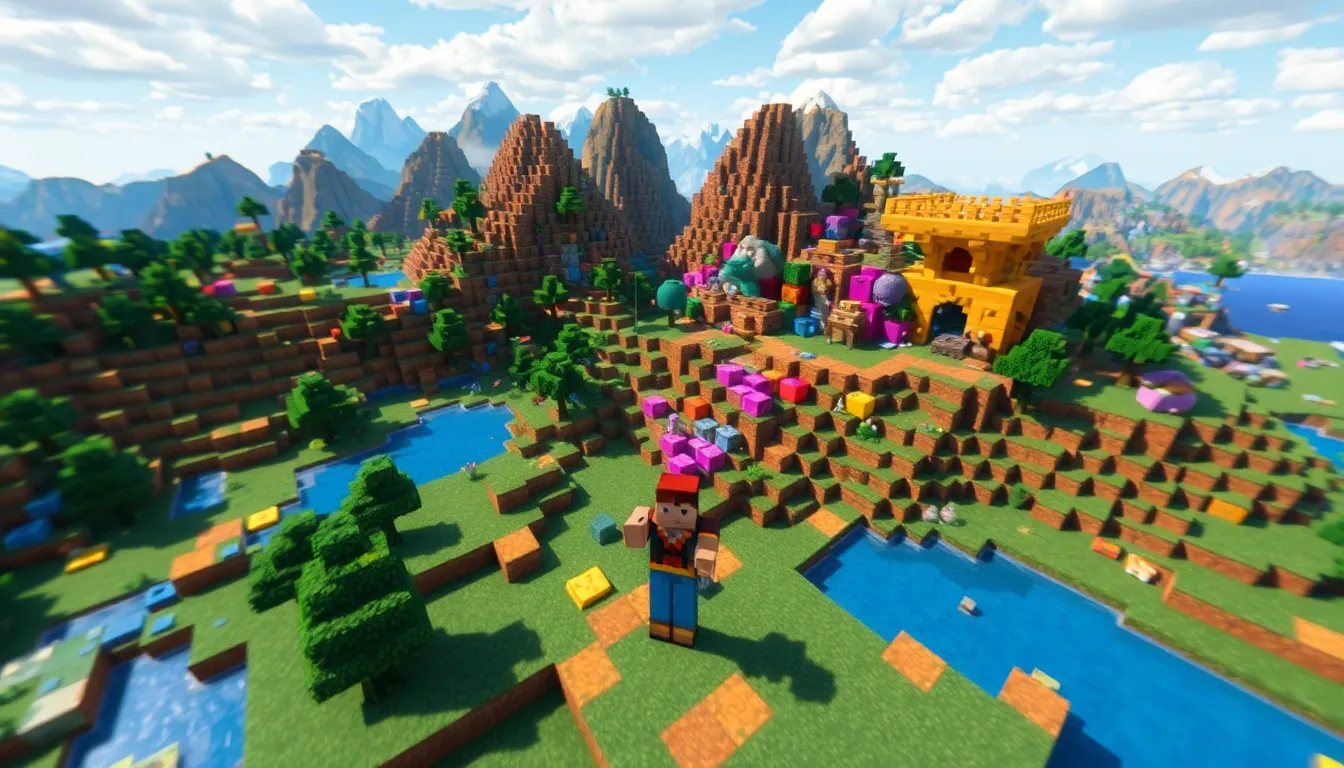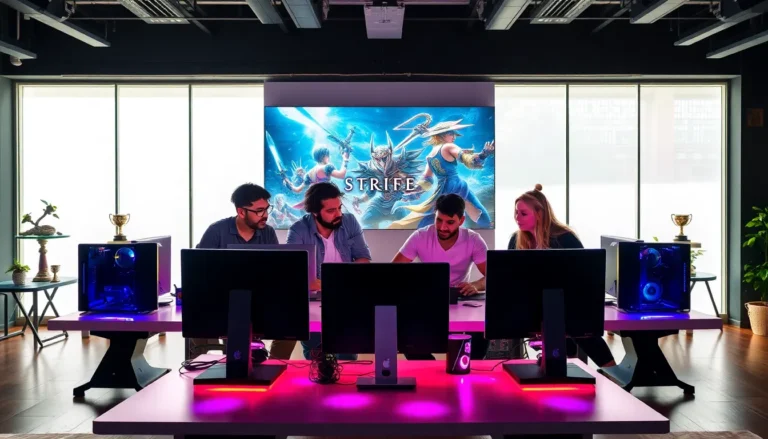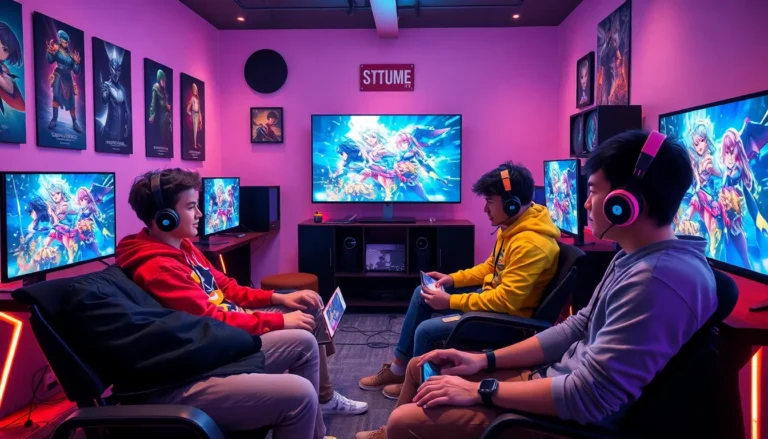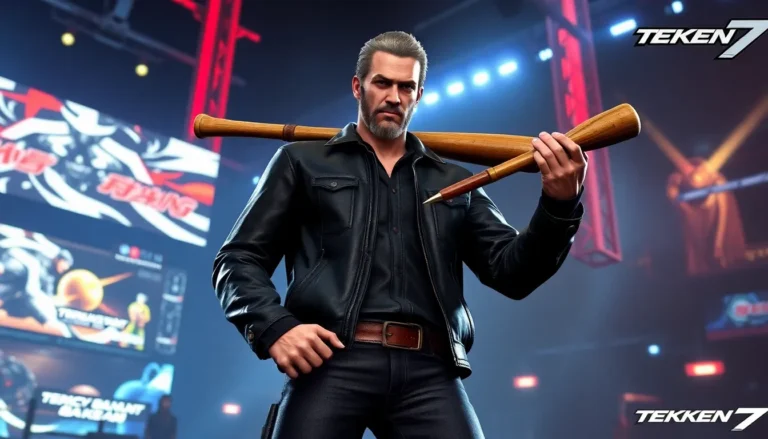In the ever-expanding universe of Minecraft, players are always on the lookout for ways to enhance their gaming experience. Enter Minecraft Fabric, a lightweight modding toolchain that’s about to become your new best friend. If you thought building pixelated castles was fun, wait until you start tweaking the game to your heart’s content.
Table of Contents
ToggleOverview of Minecraft Fabric
Minecraft Fabric serves as a lightweight modding toolchain that enhances gameplay. Designed specifically for modders, it allows for extensive customization options. Players enjoy adding new features, improving performance, and creating innovative gameplay experiences.
This toolchain prioritizes quick iterations and easy updates. Many mods rely on Fabric due to its emphasis on compatibility. Loading mods becomes straightforward without significant system strain. Moreover, Fabric provides a modular architecture, allowing developers to create individual components.
Mod developers experience flexibility with Fabric’s API. It facilitates interaction with Minecraft’s core game mechanics, which leads to creative modding solutions. Popular mods like Fabric API and Litematica showcase the potential of this framework. Each mod contributes unique functionalities, enriching the overall gaming experience.
Installation of Minecraft Fabric occurs without hassle. Players can follow clear guides available on various platforms. Once setup is complete, they unlock a world of custom content. Additional resources, such as community forums, support knowledge sharing and troubleshooting.
Community engagement fosters a vibrant ecosystem. Developers release frequent updates, ensuring mods remain functional with the latest Minecraft versions. Players participate in discussions, exchanging suggestions to improve different mods. This collaborative spirit strengthens the modding community.
Minecraft Fabric empowers players and developers alike. Its lightweight nature, modular API, and community support pave the way for enriching gaming experiences. Enhanced customization options lead to expanded horizons within Minecraft.
Features of Minecraft Fabric

Minecraft Fabric offers a range of features that enhance customization and performance, catering to both players and mod developers. The toolchain emphasizes flexibility and ease of use, which leads to a more engaging gaming experience.
Modularity and Performance
Modularity represents a core feature of Minecraft Fabric. This design allows developers to create lightweight mods without impacting game performance significantly. Users experience faster load times and smoother gameplay because mods can be selectively loaded based on what is needed. Many well-known mods, such as Fabric API and Litematica, demonstrate the advantages of this architecture. With modular components, developers can focus on specific functionalities, promoting innovative solutions that elevate the overall experience.
Compatibility with Minecraft Versions
Compatibility consistently ranks as a crucial aspect of Minecraft Fabric. The toolchain supports versions of Minecraft seamlessly, enabling mod developers to quickly adapt their content to new game updates. As new versions emerge, developers regularly update their mods, ensuring functionality and stability. Players benefit from this proactive approach, as they can enjoy a wide array of mods without worrying about game crashes or performance issues. The strong community engagement fosters an environment where compatibility remains a priority, enhancing the longevity and appeal of custom gameplay in Minecraft.
Installation Process of Minecraft Fabric
Installing Minecraft Fabric is straightforward and accessible for players looking to enhance their gaming experience. Following the necessary steps ensures a smooth setup.
Prerequisites
Before installation, ensure you have the correct version of Java installed. The Java Development Kit (JDK) 8 or newer is recommended for compatibility with Minecraft Fabric. Players must also have the Minecraft client installed on their devices. Minecraft’s official launcher should be up to date to avoid issues. Checking these prerequisites guarantees a seamless installation process.
Step-by-Step Guide
- Download the Fabric Installer: Navigate to the official Fabric website and download the installer specific to your operating system.
- Run the Installer: Open the downloaded file and select the correct Minecraft version from the dropdown. Choose the loader version that matches the game.
- Install Fabric: Click the Install button. This integrates Fabric into your Minecraft setup.
- Add Fabric API: Visit the mods section of the Fabric website to download the Fabric API. Place the downloaded file in the mods folder found in the .minecraft directory.
- Launch Minecraft: Open the Minecraft Launcher, select the Fabric profile, and start the game. Confirm that installed mods appear in the mods menu.
These steps lead players to a customized Minecraft experience tailored to their preferences.
Popular Mods for Minecraft Fabric
Minecraft Fabric boasts numerous mods that enhance gameplay and offer diverse features. Below are some pivotal categories of mods worth exploring.
Must-Have Mods
Fabric API functions as a foundational mod, providing essential libraries for many others. Litematica allows players to create and share schematics, simplifying building projects. OptiFabric integrates OptiFine’s performance enhancements for smoother visuals. Journey Map adds a detailed map to track exploration and mark locations. Many players enjoy these mods, as they significantly improve gameplay and overall experience.
Community Favorites
The community embraces Biomes O’ Plenty for its expansive range of new biomes, enriching the landscape. Another favorite is theEnchantment Descriptions mod, which offers clarity on enchantment effects. Chat Heads displays player avatars in chat, adding a fun visual element. Inventory Tweaks enhances inventory management, making in-game item organization seamless. Each of these mods not only elevates game enjoyment but also fosters collaboration within the vibrant Minecraft Fabric community.
Comparison with Other Mod Loaders
Minecraft Fabric stands out among mod loaders like Forge and Quilt due to its lightweight design and modular architecture. This structure enables quick updates and enhances compatibility with Minecraft’s frequent patches. Players benefit from a seamless experience, as mods easily adapt when updates occur, mitigating issues common in heavier mod frameworks.
Forge, while robust, often suffers from longer load times and stability challenges due to its complexity. Mods on Forge can demand more system resources, which potentially impacts performance. In contrast, Fabric’s efficiency allows players to employ multiple lightweight mods without significant performance drops, creating a smoother gaming experience.
Quilt, another mod loader, shares some similarities with Fabric but focuses on a different community engagement model. Developers on Quilt emphasize collaborative efforts, while Fabric developers prioritize rapid mod iteration and streamlined updates. This distinction empowers Fabric’s modders to release updates swiftly, ensuring players enjoy the latest features without delay.
The community surrounding Fabric is also vibrant and responsive, actively participating in discussions about mod quality and compatibility. Mod developers often work closely with players to fine-tune features, fostering a connected environment. Mods such as Fabric API and Litematica exemplify this energy, showcasing innovative solutions tailored to player needs.
When considering installation, Fabric’s process is straightforward compared to other loaders, which may present more hurdles. Players can quickly set up their mods using clear guides, enhancing accessibility for newcomers. This approach encourages a more diverse group of players to explore customized gameplay, elevating the overall Minecraft experience.
Minecraft Fabric stands out as a powerful tool for gamers seeking to elevate their Minecraft experience. Its lightweight design and modular architecture allow for seamless integration of mods without compromising performance. This flexibility not only benefits developers but also enriches gameplay for players. With a thriving community and a wide array of mods available, Fabric encourages creativity and collaboration. As players continue to explore the vast possibilities that Fabric offers, the future of modding in Minecraft looks brighter than ever. Embracing this innovative framework opens doors to endless adventures and unique gameplay experiences.




